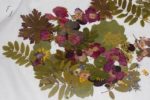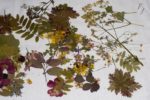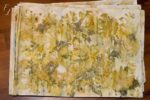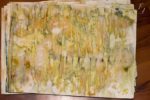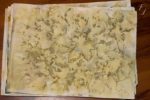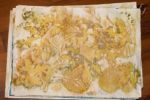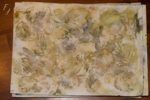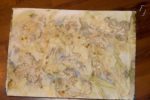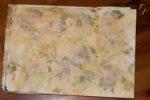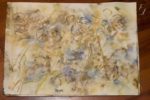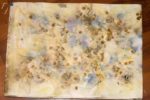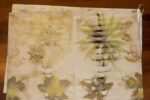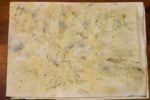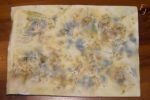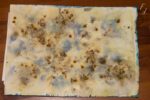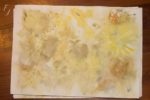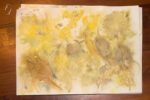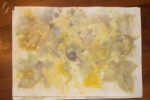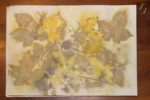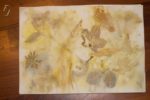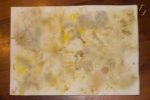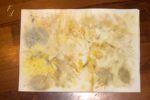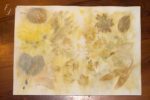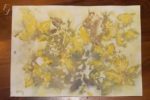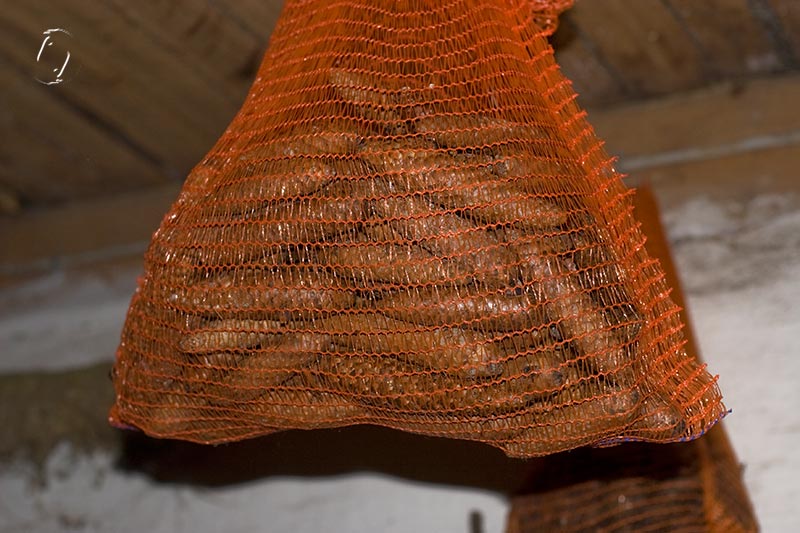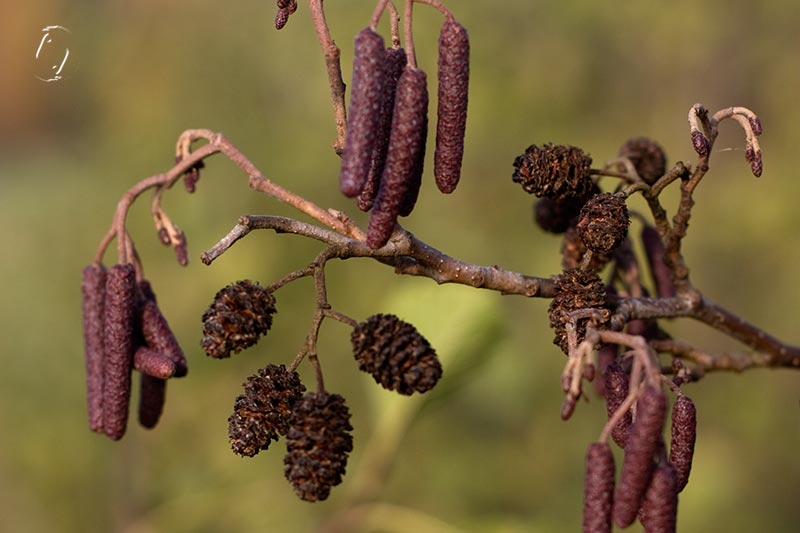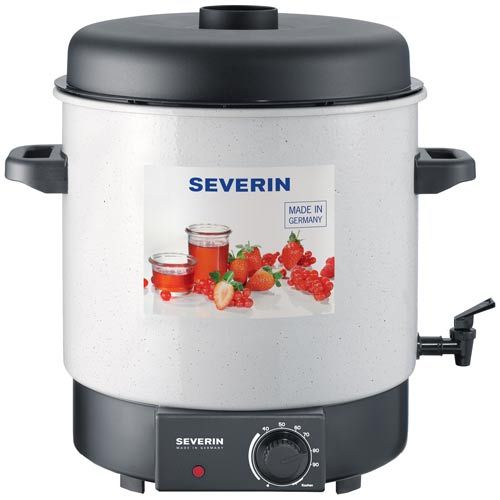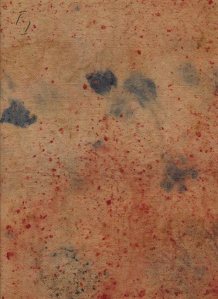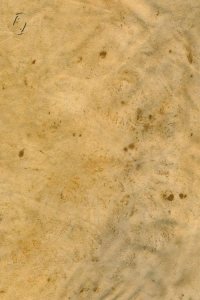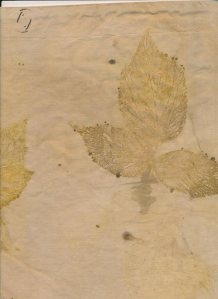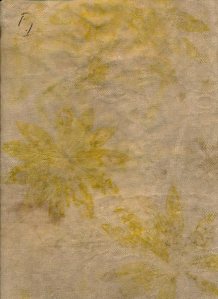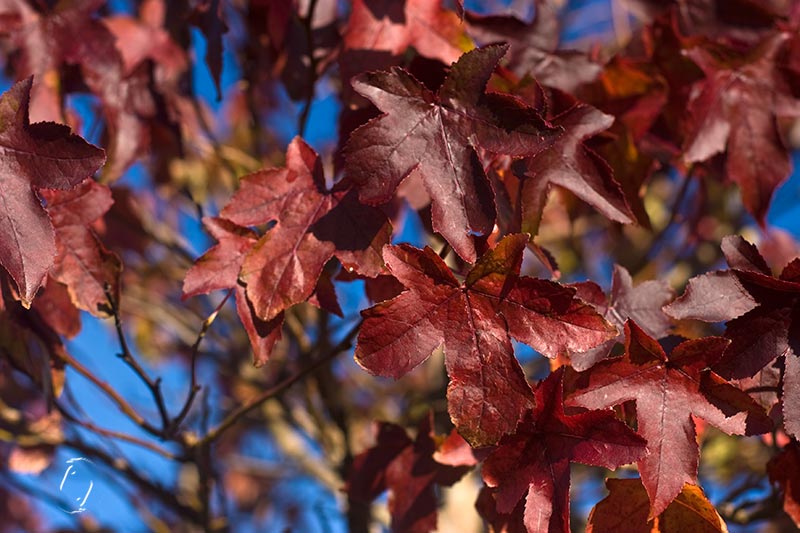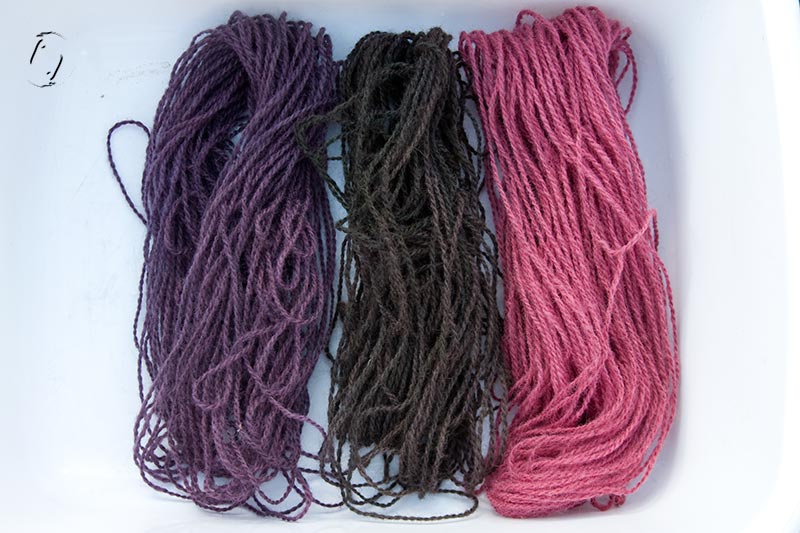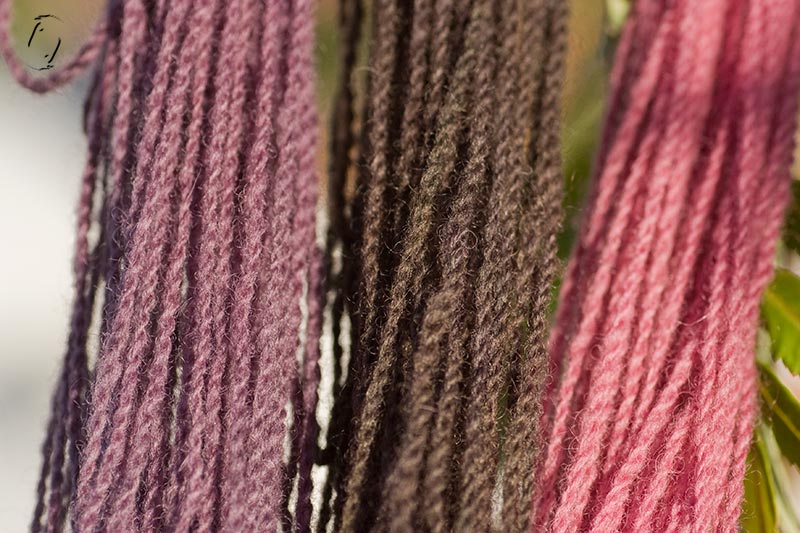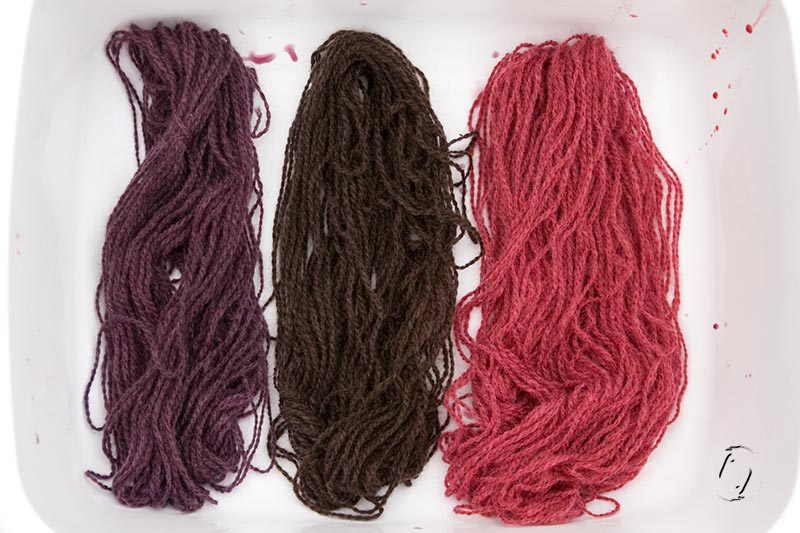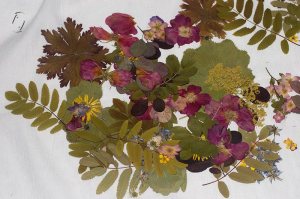 Dry flowers apparently aren’t my thing, they look very dull and broken, some leaves might be useful. I don’t know if I went overboard squishing them real hard with clamps on the books?
Dry flowers apparently aren’t my thing, they look very dull and broken, some leaves might be useful. I don’t know if I went overboard squishing them real hard with clamps on the books?
I do still plan to try some garden printing, when time allows. There must be stuff out there that I can use even late in the season! Maybe I can do it on pieces of cloth that I plan to plant dye, if I use acrylics, they shouldn’t wash off no matter what I put the material through afterwards, at least that’s the deal when I get it on my clothes…. (does anyone paint and manage to look pretty throughout?) I wish I had some more fluid paints than the ones I have, guess I’ll have to invest in Golden acrylics next time.
In the meantime I saw those posts on plant dyeing on paper, which I just had to give a go although late in the season. Next summer and flowers and new dyebed (which hubby at the moment has decided to till for me as a first prep! Yay him!)
First session went quite well although I had no idea how to “steam” the paper, nor how to best keep the sandwiches tight and not floating apart. So I’ll be getting some alder leaves and some coreopsis from the freezer, and hey! How about all those dry homegrown weld and Dyer’s chamomile I collected!? Any Woad leaves left out there I wonder?
Time to get a bit scientific about it. Two pair of sheets soaked in vinegar, two in aluminium acetate. Alder leaves, more yellow birch leaves and Liquidambar styraciflua. Another sandwich, same mordants, strawberry leaves green and yellow, sage, celandine. In between the 2 sets, a layer of frozen coreopsis tinctoria and blue columbine flowers.
Then there’s the consideration of temps. Will a too high temp give dull prints? How low can you go and still get steam? I started with 150 C because 100 didn’t seem to get steamy. 120 doesn’t seem to quite work either, no visible steam anyway.
I’m showing both front and back of some sheets, since they could be used either way.
Unfortunately at some point in the drying process, I lost track of which 4 sheets were aluminium soaked instead of vinegar, AND forgot in which way they were different. I could identify them by which first sheet has the grate imprint from the oven, but after a 3 day break I also forgot which batch was on the bottom. DUH. Scatterbrain.
I’m happy enough with these results that I’m going to keep playing with paper and plants. Test which seasons give the best results and see if I can find any info on it. Some also say use “dead” leaves collected from the ground, some even use older leaves and soak them first. Hmmmm – I wonder about the above pressed flowers and stuff now?!
A short search gave me:
Cassandra Tondro on eco printing with a recipe (backwards) for paper steaming
The natural surface – great forum
Threadborne list of plants to use
Next challenge: If I order a new batch of water colour paper, can I resist getting pens and inks and other lovely supplies while I’m at it?! Now that I’m getting a micro painting studio and all….

